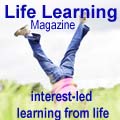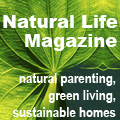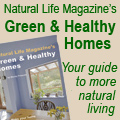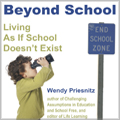 |
It’s been a long time since I had little babies to take care of. But the work I do with new parents reminds me how confusing, delightful, exhausting, and wonderful those times were. My years of experience as a La Leche League Leader and my years as a homeschooling mother of four children give me a practical base of experience to draw on when discussing parenting issues. As my children grew, my understanding of good parenting grew as well. Now that my four children are all adults, I have more flexible ideas about what good parenting is and realize that there is no one-size-fits-all style. But what about new parents? There is so much information and advice available. Often, this information is contradictory. One source will say that you should never take a baby to bed with you because then this baby will sleep with you forever. Another source says that co-sleeping helps to regulate a baby’s heart rate and stimulates them so that they don’t fall into such deep sleeps. Some sources say that co-sleeping causes SIDS and others say it prevents SIDS. How do you decide who to believe? How can you make sure you’re doing the best for your baby/child? I’m going to list four steps, which I’ve found helpful when I need to assess the value of advice or information. Then I’ll go through each step using an example. Although the example involves advice for a three-month-old baby, these steps can be applied to parenting advice for all ages of children: 1. Check out the credentials of the person or persons giving the advice or information. 2. Look for the underlying reason or issue that this information or advice represents. 3. Place this suggestion into the context of child development. 4. Evaluate this advice through the lens of your value system. Here is an example to use to understand these critical thinking steps: “Babies need to learn to self-soothe to sleep well and should not be rocked or nursed to sleep.” Step 1. Check out the credentials of the person making recommendations. Who is this person? What background does he or she have that leads to this recommendation? What information backs up this suggestion? Childcare, like childbirth, has become the domain of medical experts and is seen through the lens of a medical model. At one time, grandmothers, mothers and/or aunts were consulted and assumed to have a wealth of practical knowledge about how to care for babies and children. Our mobile society and the loss of family contact often make a child’s doctor the one parents turn to for very basic everyday childcare information. I don’t mean to discount the importance of doctors, pediatricians, and other professionals regarding a child’s well-being, but it is important to remember that the medical model focuses on pathology. Step 2. Think about the underlying issue regarding the baby or childcare advice. What is it? Is it appropriate or physically possible for a three-month-old to learn to self-soothe? What is the harm in rocking and nursing a baby to sleep? Is this about harm for the baby or about setting up limits to parental care? What is the fear here? I see this piece of advice as an expression of our culture’s fixation on independence. Parents receive many subtle messages that say that a “good” baby is one who doesn’t disrupt our lives or make demands on our time beyond what we are willing to give. The fear is that if we rock a baby to sleep, it will set up a pattern of dependence. Perhaps we will need to rock and nurse our baby to sleep everyday of their life! (By now you might be able to see my bias. For a delightful look at rocking a baby to sleep forever, see Robert Munsch’s book Love You Forever). Sometimes projecting the underlying issue into the future like this can help you to see the absurdity or value of the advice. Step 3. Place this advice into the context of child development. There are many sources of information about brain development and ages and stages, both in print and online. Keep in mind that whenever anyone presents information, they present it within the context of their own value and belief system. I found the book Why Love Matters – How Affection Shapes A Baby’s Brain by Sue Gerhard a fascinating look at the intricate dance between a baby and their mother. Mutual gazing, cooing, and other exchanges affect a baby’s brain development and shape their neural pathways. Babies whose cues are responded to in a timely manner learn to regulate their emotions. They learn that while there may be cause for alarm at a particular moment, someone will help them regain a calm, comfortable state. From studies done in the last half of the 20th century and the first part of this one, it has been shown that babies need to be held, cuddled, rocked, physically comforted, and touched. Babies’ heartbeats are regulated by their mothers’ heart beats. Babies’ brains develop in a relationship with the primary caregiver. Public Health departments often have easy-to-read informative handouts about responsive baby care and attachment. Human beings are carry-type mammals. Our babies need to be fed frequently because the protein content of human milk is lower than cache animals like deer who feed their babies and then leave them for a few hours while they graze. Human babies, like all carry species, need frequent feeding and therefore need to be in close proximity to their mothers by being carried from place to place. Carrying babies and children stimulates their vestibular system. Being held stimulates their sense of touch. Being carried gives babies stimulus for all of their senses with sights and sounds that they may not otherwise experience. I used to work with a child who has sensory processing disorder (SPD). According to the Sensory Processing Disorder Network (www.sinetwork.org) sensory processing refers to our ability to take in information through our senses (touch, movement, smell, taste, vision, and hearing), organize and interpret that information and make a meaningful response. “For most people, this process is automatic. When we hear someone talking to us or a bird chirping, our brains interpret that as speech or an animal sound, and we respond to that information appropriately. Children who have SPD don’t experience this process in the same way. SPD affects the way their brains interpret the information they take in and also how they act on that information with emotional, attentional, motor, and other responses.” Children with SPD often respond well to treatments designed by occupational therapists that stimulate their senses such as wearing weighted vests or placing small sandbags on their legs, making information processing easier. After working with the child with SPD, I realized anew how important it is for any child’s development that sensory systems are stimulated in the early years. Rocking, swinging, being held and carried all contribute to stimulating that development. Step 4. Look at this advice through the lens of your philosophy of life, your own value system. I’ll close with a quote from Jean Vanier’s book Becoming Human. His words sum up what I often find missing in parenting advice – the importance of the quality of one’s relationship with a baby/child. Jean Vanier, CC, GOQ, Ph.D. is the founder of L’Arche, an international organization that creates communities where people with developmental disabilities and those who assist them share life together. Vanier has been awarded the Order of Canada and in 2006 received the prestigious Beacon Fellowship Prize for his lifelong commitment to the care, well-being and independence of people with disabilities worldwide. He says, “Love has a transforming power. It is first and foremost a revelation of a person’s essential, fundamental beauty and value. If nobody reveals to children their innate beauty and value, they will never know the importance and the meaning of their life.” Marty Layne is the mother of four adult children and the author of Learning At Home: A Mother’s Guide To Homeschooling, Newly Revised Edition. She has also recorded a children’s music CD called Brighten the Day – songs to celebrate the seasons. You can read more about her at www.martylayne.com.
| |






